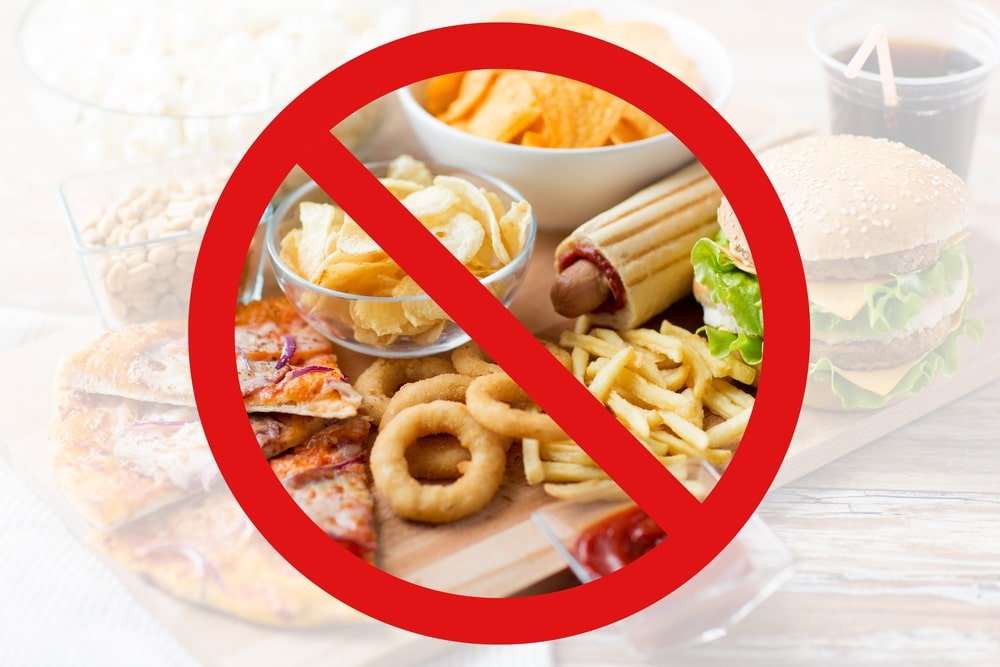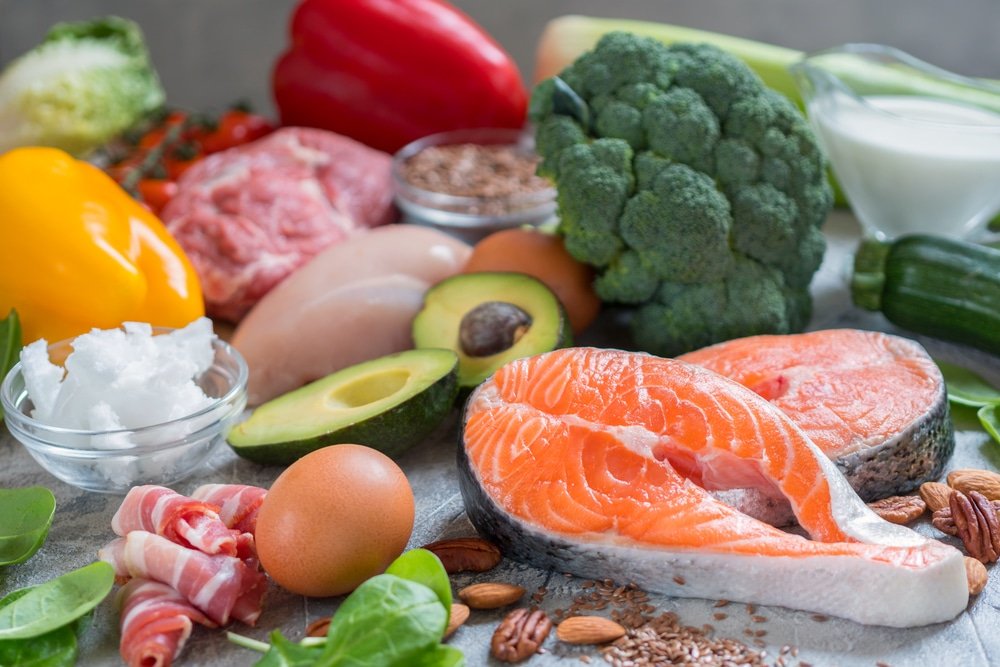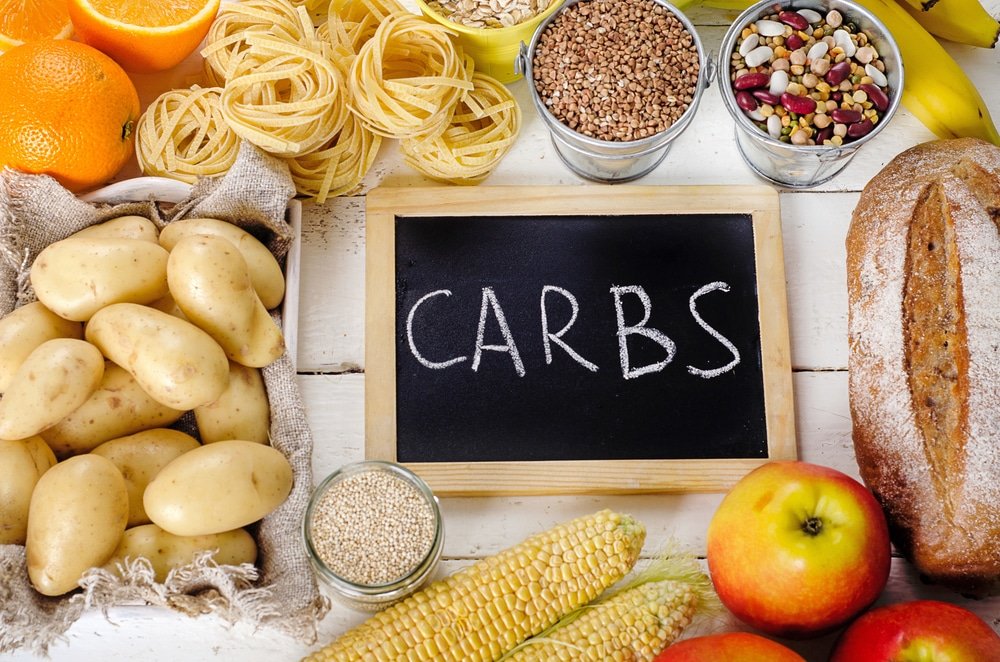Over the past year or two you have undoubtedly heard the word keto or ketogenic diet tossed about in a few conversations around you, even though you may not understand what the fuss is about. You’re in luck, as after reading this guide to the end, you’ll have all your questions answered.
Consider this your ketogenic diet 101 crash course. Class is now in session!
What Is Ketogenic or Keto Diet?
Simply put, the ketogenic diet is a low carbohydrate diet that emphasizes high-fat consumption, along with moderate protein to support the body entering a state of ketosis.
Ketosis is a metabolic state by which the body is made to use alternative sources of fuel, due to the unavailability of glucose. If you have a diabetic relative, you may be familiar with the word ketosis, but it is important to differentiate diabetic ketosis from a state of ketosis that you willingly enter.
Diabetic ketosis is very serious, and occurs even though blood glucose is sky-high, as the body is unable to absorb it sufficiently. Dietary ketosis on the other hand results in metabolic changes that prioritize the usage of fat for fuel[R], which is what the ketogenic diet is all about.
How Does The Body Enter Ketosis?
Great question! The body doesn’t willingly want to enter ketosis, which is why an important prerequisite of the diet is the restriction of carbohydrates. Initially, total daily carbohydrate allowance is usually in the vicinity of 50 g, while as you progress this number may be cut to as low as 20 g. This is an extremely low number, and one most people consume in one meal sitting per day.
A can of soda contains more than 20 g of sugar, putting in perspective how little this amount is.
Typically, when we consume carbohydrates, it is broken down into glucose where it is then absorbed into blood and subsequently shuttled into muscle cells where it is used to produce energy, or more specifically ATP, which is the energy currency our body uses.
However, the body only needs so much glucose at any one time. Any excess consumed will be stored in muscle or the liver as glycogen, but much more frequently, as body fat. As time goes by, metabolic processes may shift to favor the storage of excess glucose as fat as opposed to glycogen, which is why people get fat from consumption of carbohydrates, and not necessarily fat.
So What Happens If You Restrict Carbohydrates?

Over the first few days, the body starts to use all the stores of glycogen it has as its disposal. These glycogen stores are not infinite, and are depleted rather quickly, meaning that it needs to find an alternate energy source – and fast.
Enter fat- our body’s emergency energy source and the one we want to tap into.
There is one major difference between fat and glycogen however, which is the fact that stored glycogen can be converted into glucose, whereas fat cannot. So what is it converted into? The answer to this are compounds known as ketone bodies.
These ketone bodies are produced in the liver from fats, being made into compounds such as acetoacetate, beta hydroxybutyrate, and their metabolic products acetone.
Ketone bodies can thus, be considered the body’s alternative energy source, which is the one used by organs that cannot use fat for fuel, such as the brain. Without this alternate energy pathway, restriction of carbohydrates for even a short amount of time, such as a few days, would result in death.
How Long Does It Take For The Body To Enter Ketosis?
Though individual differences may vary, the body enters ketosis shortly after glucose and glycogen stores are depleted. For most people, this is usually a couple of days, but may take as long as a week for others.
A good indicator to know if your body is currently in the state of ketosis? Your breath. Ketone bodies are present in saliva and have a distinctly pungent fruity odor, close to that of nail polish remover.
Alternatively, there are specialized urine testing strips which can be purchased to indicate if you are in a state of ketosis, as these products are passed out in the urine as well.
Why Should You Embark On Keto Diet?

There are multiple reasons why you may become interested in the ketogenic diet, as it has multiple benefits on health, the most popular ones being:
1. Weight Loss
By far the most common reason people start to follow the ketogenic diet is for its highly noticeable effect on reducing body weight[R]. Unquestionably, when you reduce your carbohydrate intake, your body has no other option than to dig in to your fat stores in order to provide energy.
It is important to not get confused with yo-yo ketogenic diets, as the weight lost during the first week or two is primarily water, since as the body’s glycogen stores are depleted, water stores along with it are removed.
This is also why the low carbohydrate ketogenic diets are followed by bodybuilders in the weeks leading up to a competition, as it can help to remove significant amounts of subcutaneous water so that they achieve that shredded muscular look.
2. Improved Blood Glucose Management
It is never too late to take hold of blood glucose levels, even though type II diabetics need to exhibit a greater degree of care when starting a keto diet.
Blood glucose dysfunction occurs for two reasons; following excessive overconsumption of carbohydrate heavy foods, especially fast digesting simple carbohydrates, and insulin desensitivity from frequent stimulation of this hormone. The ketogenic diet can help to address both aspects of blood sugar management[R].
The way our genes are programmed, in primitive man insulin was lucky to be called into play once per week, where it did its job efficiently of shuttling important glucose into muscle cells, and a very small minority into fat cells.
Fast-forward to modern day where the availability of simple processed carbohydrates are abundant, and insulin is being recruited several times per day, each time we consume a carb heavy meal.
You can think of insulin as a subservient carrier, one that must fetch your bags to your room every time you call on him. Doing so several times per day will inevitably lead to fatigue, which is exactly what happens as insulin becomes desensitized, or insulin resistance develops.
Over time, insulin becomes a less efficient carrier, being able to transport less and less glucose into cells at any time. In an effort to compensate, more insulin is produced to meet the demand, but they soon too meet the same fate.
Eventually, a state is attained called insulin saturation, where the production of the hormone “tops out” but is still unable to sufficiently promote glucose absorption. Ladies and gentlemen, this is the genesis of type II diabetes.
The only way to salvage insulin function, and hopefully regain some degree of sensitivity[R] is to start reducing glucose load over the course of the day. The ketogenic diet is a perfect way to achieve this.
On an important note: protein can be converted into glucose in excess, which is why the ketogenic diet does not advocate for high protein consumption as this may defeat the purpose of it.
3. Reduces Risk Of Cardiovascular Disease
It is a common source of confusion for people new to the ketogenic diet to hear that high-fat consumption could actually reduce the risk of heart disease[R].
Much of the danger surrounding fats comes from the specific type of fat consumed. Over the past 50 years, synthetically manufactured “trans” fats have become popular, owing to their affordability and potential to increase palatability and shelf life of packaged goods.
However, these Trans fats have no nutritive value, and are the ones most likely to increase your triglyceride and LDL values, both of which are associated with an increased risk of heart disease.
The absorption of fat is significantly enhanced under the influence of insulin, which is why foods high in sugar and fats are positively bad for health, especially when they consist of the lowest quality macronutrients.
Good fats consumed alone can be very beneficial to health, as the mono and saturated fats play important parts in hormone synthesis, while polyunsaturated fats help to reinforce the structural integrity of blood vessels, the skin barrier, and help to keep the insides of blood vessels free from blockages.
The blockages that develop inside blood vessels occur primarily due to the influence of inflammatory processes[R], and fructose based carbohydrates (such as those in soda), while natural fats have little to no role on the development of these maladies.
4. Epilepsy
The ketogenic diet has been making a resurgence as a treatment adjuvant for epilepsy, with evidence of its use dating back as far as 500 BC[R]. The ketogenic style diet remained popular up to the early 1900s, when the advent of effective medication saw its popularity decrease with patients.
Regardless, the use of the ketogenic diet for epilepsy management has sound scientific logic, as the brain of persons that experience epileptic seizures display abnormal glucose metabolism patterns, and accumulation of byproducts that should not be present.
The best way to reduce the accumulation of these byproducts, and prevent the effects of improper glucose metabolism? Replace the fuel source. This was the hypothesis behind the use of the ketogenic diet for the management of epilepsy, which proved very effective. By offering the brain an alternate energy pathway, epileptic seizures decrease significantly in the vast majority of patients.
Currently, people are going back to the ketogenic diet owing to refractive drug use, which is the failure of standard drug treatment in managing the condition[R].
5. Improved Brain Performance
During the first week or two when you are new to the ketogenic diet, brain performance suffers. The switch from glucose to using ketones for energy is not a welcome one that the body willingly does, but after the brief initiation phase, things only get much better.
You have surely noticed that when your blood sugar is low, your concentration fails and you mentally feel sluggish. What do you do in such an instance? You refuel with more carbohydrates. On the ketogenic diet, there is a constant stream of ketone bodies, which provide the brain which fuel on demand.
This is why the initial mental fog that follows the withdrawal of sugars may seem tough, but as your body quickly transitions to using ketones for fuel, brain performance soars.
6. Miscellaneous Benefits
There are many more investigational benefits that the ketogenic diet is being studied for. Amongst these are in helping to prevent the development of neurodegenerative disorders[R] such as Parkinson’s and Alzheimer’s disease, reversing polycystic ovarian syndrome (PCOS)[R], reducing your risk of cancer, and helping to manage acne and digestive issues.
Different Types Of Ketogenic Diet

There are a few different variations to the ketogenic diet which may be more or less appropriate for you depending on your overall goals. Here is a quick overview of what the most common types entail:
1. The Standard Ketogenic Diet
This is the typical variety most people will follow, especially if overall health is your goal and not specifically fitness.
This diet involves the restriction of carbohydrates to 5% or less of daily caloric intake, while protein accounts for approximately 20%, with the other 75% being from fat.
2. The Cyclical Ketogenic Diet
This is fast becoming one of the most popular ketogenic diet variations, since it allows for some degree of flexibility, especially for young people that may have an active social life. It involves following standard ketogenic diet principles during weekdays (Monday to Friday) and relaxing the restrictions over the weekend, or two days in a stretch.
You do not have to follow this pattern per se, but the key is still have a five on- two off day approach to the diet.
3. High-Protein Ketogenic Diet
This variation of the ketogenic diet is preferred amongst athletes training for competition, since it allows for a greater degree of protein consumption, upping the calories that come from protein to 35%, reducing fats to 60% but keeping carbohydrates at 5%.
Following the high-protein ketogenic diet on a normal basis when you do not specifically need a higher protein intake could cause the diet to fail altogether, since protein can be converted to glucose when there is an abundance in blood.
4. The Targeted Ketogenic Diet
During the off-season, or noncompetition training phases for many athletes, but more specifically bodybuilders and power lifters, the targeted ketogenic diet is a smart approach for minimizing fat accumulation during the rest of the year, while still allowing for a good degree of muscle growth.
The basic premise of this type of diet is that it allows you to consume carbohydrates around your work out, both before and after, to ensure performance is high and that muscle glycogen stores are refilled following the end of your work out. This type of ketogenic diet can help athletes keep up performance levels throughout the year.
Foods To Consume While On The Ketogenic Diet
This is arguably the most important aspect of the ketogenic diet, but one which many people fail to address. Apart from actively recording every single thing you eat, you need to get educated about what is acceptable and not.
Acceptable Keto Diet Foods

Meat
Meat is an important staple on the ketogenic diet, primarily fresh and not much preserved, canned or packaged varieties. Virtually all meat is fair game on the ketogenic diet, so feel free to have the following:
- Beef
- Pork
- Chicken
- Eggs
- Turkey
- Fish, including Deepwater Omega tree rich fatty fish
- The occasional ham, bacon, sausages
Most Vegetables
Apart from fats and proteins, you do need food that can be considered a “base”, in order to help fill you up. Why the ketogenic diet by itself helps to reduce appetite to an extent, eating a piece of fish alone for lunch is going to leave you hungry. This is why it is important, and advised to fill your plate up with low-calorie vegetables, especially those referred to as salad greens. These include:
There are many other vegetables that are extremely low calorie, and virtually carbohydrate free, meaning that you can absolutely indulge in as much of them as you want, and hardly nudge your caloric intake.
Fats
While fats actually comprise many different classes of foods, for convenience we have aggregated them under one listing. These include cooking fats, but also those which you can consume along with meals, or even eat as is. Great options include:
- Cheese – specifically unprocessed cheddar, cream, mozzarella or goat cheese
- Cooking oils – extra-virgin olive oil, coconut oil and avocado oil should be your staples. Butter and cream are also great options and can add flavor when needed. Coconut oil is especially useful owing to its medium chain triglyceride content (MCT) which are easily converted into ketone bodies by the liver.
- Assorted seeds and nuts – including almonds, pumpkin seeds, chia seeds and flaxseeds
- Condiments – pepper, salt, oil based salad dressings, and numerous powdered or ground herbs and spices
- Fruits – the only fruit that is wholly ketogenic diet approved is the avocado. Yes, the avocado is a fruit and not a vegetable as many people believe.
Beverages – Tea, coffee, wine (in extreme moderation), and of course water.
Foods To Avoid On Keto Diet

While we can simply group everything that does not fall into the above categories as unsuitable for the ketogenic diet, it is better to pinpoint specific items to avoid at all costs. Be sure to look out for the following:
Starches
These are the current staples of 95% of the world’s population, and may be the hardest habit to kick when starting the ketogenic diet. It’s time to cut the following out of your diet:
- Wheat products, including bread, pasta, flour, crackers and cereal to name a few.
- Grains-these include the ever popular rice and barley products.
Sugar Heavy Snacks Or Treats- these include soda, cake, pastries, ice cream, candy and the virtually endless array of other snack foods.
Fruits and More..
Fruit – 99% of fruits need to be avoided, except those with the lowest glycemic index, or which can be tolerated in a small amounts such as specific berries.
Legumes And Beans – various peas, lentils and beans
Condiments – especially ketchup, non-oily dressings, and sauces
Alcohol – this includes beer, vodka many associated cocktails, whiskey and more
Diet Foods – even if on the surface their nutrition facts indicate 0 g of carbohydrates or fats, they definitely have substitutes that will adversely impact insulin levels and cause metabolic dysfunction on a grander scale.
Synthetic Fats – these include multiple variations of vegetable oils, margarine, mayonnaise and packaged treats with a savory taste.
Root Vegetables – these include potatoes, carrots and many provisions
What To Expect When You Start To Ketogenic Diet
The first week or two after starting the ketogenic diet is the hardest, as your body slowly adjusts its metabolism to be primarily fat-based. As long as you make it past this initial two weeks, the rest of the diet will be far more tolerable, and the chances of you reverting to a higher carb diet once more are low.
You can expect to encounter the following:
1. Electrolyte Imbalances
As your body gets rid of stored glycogen, in the process a lot of water is also lost. As a result, you may experience periods characterized by muscle cramps, dehydration or more associated with altered mineral balance[R].
To overcome this, it is a good idea to ensure you are consuming a balanced multivitamin that supplies the daily recommended intake of all important minerals, or use a ketosis friendly electrolyte supplement. Your body’s water and electrolyte balance will soon regain balance, and you can minimize this with preemptive action.
2. Lethargy
The feeling of no energy is common as well, and may force you to resort to carbohydrate foods. This will only set you back, or make you quit the diet altogether, so it is important to not falter. It will not last forever, but just for the week or two as your body becomes acclimated to its new energy source.
3. Altered Mental And Emotional Well-Being
The brain fog is common, but may occur with insomnia, irritability or depressive symptoms, as your reliance on carbohydrates is removed. Consumption of the protein tryptophan[R], commonly found in meat like turkey, can help to alleviate much of the emotional symptoms you may be experiencing, as after the initial transition phase, your brain performance will take on a new level of efficiency.
Ketogenic 101 – Summary
The ketogenic diet has numerous benefits for the vast majority of the world’s population. Of course, a lot of people will inevitably revert back to their own way of eating, as often times tradition outweighs change.
If you are considering starting this diet, consult with your physician before doing so. Getting a clean bill of health to start will ensure you don’t hit roadblocks that will prevent your progression to a healthier lifestyle.
[james]https://www.ncbi.nlm.nih.gov/pubmed/6865776
https://www.nejm.org/doi/full/10.1056/NEJMoa022207
https://www.ncbi.nlm.nih.gov/pmc/articles/PMC1325029/
https://www.ncbi.nlm.nih.gov/pubmed/15767618
https://academic.oup.com/jn/article/132/7/1879/4687418
https://www.ncbi.nlm.nih.gov/pubmed/19049574
https://www.ncbi.nlm.nih.gov/pubmed/11581442
https://www.ncbi.nlm.nih.gov/pmc/articles/PMC1334192/
https://www.ncbi.nlm.nih.gov/pmc/articles/PMC5608861/
https://www.ncbi.nlm.nih.gov/pubmed/21488845[/james]



